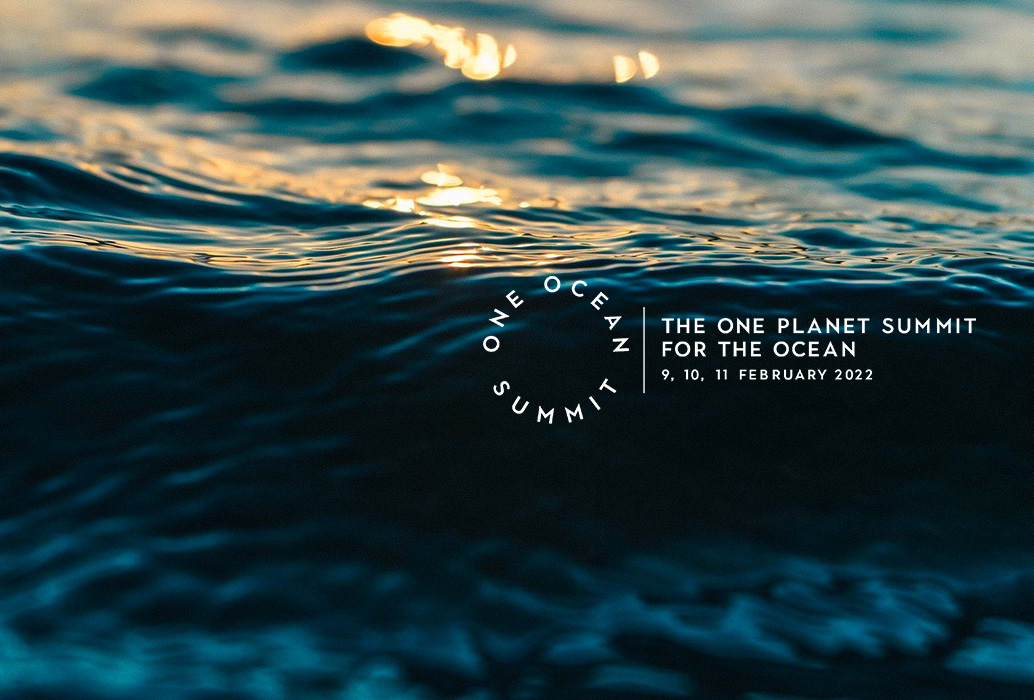If we could put a price on nature, what would it be? Listed shares have a market value; why not the ecosystems whose survival dictates our own? This idea of monetising a common resource based on the services it provides is a fundamental question in a context of global warming and investment in climate action. The ocean is a vital part of the equation because of its role in maintaining ecological balance but also because, outside of exclusive economic zones, the ocean belongs to no-one. Or rather, it belongs to everyone. Do we need reminding that the ocean provides half the oxygen we breathe and has absorbed 90% of the excess heat from human activity and a quarter of carbon emissions since 1970. Some 90% of global trade uses maritime transport. Three billion people rely on the ocean for food and a livelihood.
Underfunded
So, to answer our question, how much are the ocean’s riches worth? A report by WWF values key ocean assets at US$ 24 trillion, which is roughly the GDP of the United States. Better still: if there were a country called Ocean, it would generate an annual value of goods and services of US$ 2.5 trillion. This would rank it eighth among the main global economies, behind France and ahead of Canada. The OECD projects that this figure will rise to US$ 3 trillion by the end of the decade. Investments should be pouring in to preserve the ocean and grow this capital. Instead, initiatives that meet the criteria of United Nations Sustainable Development Goal 14 to “conserve and sustainably use the world’s oceans, seas and marine resources” are chronically underfunded.
In the past decade, sustainable investment in the ocean economy amounted to 1% of the value of its assets.
Staying with statistics, the 2021 State of Finance for Nature report drawn up by the United Nations and the World Economic Forum notes that annual investment in nature-based solutions amounts to US$ 133 billion or 0.1% of global GDP. The vast majority of this (86%) comes from public sources. Investments in nature-based solutions will have to triple by 2030 and increase four-fold by 2050 in order to achieve climate, biodiversity and land degradation neutrality targets, the report indicates. It goes on to note that marine nature-based solutions are not covered by the current report and will be included in future editions. Don’t hold your breath: the World Resource Institute states that during the past decade, sustainable investments in the ocean economy were equivalent to 1% of the value of its assets. Based on WWF estimates, this comes to US$ 24 billion a year – a ridiculously small amount considering the US$ 8.1 trillion investment in nature needed between now and 2050… if we are to avoid being frazzled! What may seem like a daunting figure, a financial Everest that is impossible to scale, can be put into the perspective of certain market caps. In January 2022 Apple’s market value hit US$3 trillion with some US$ 200 billion in cash.

In a situation such as this, any good news is welcome. Fortunately, there has been some. At the One Ocean Summit held in February in Brest, France, the European Investment Bank, together with its French and German counterparts, doubled the original target of a €2 billion investment in the Clean Oceans Initiative by end 2023 to a €4 billion investment by end 2025, thanks in part to a contribution from the European Bank for Reconstruction and Development. To date, the Initiative has financed projects which address the most urgent threats facing the ocean, including €1.6 billion of long-term financing for projects that reduce ocean plastic pollution through improved solid waste and wastewater management. More than 20 million people will benefit from projects signed so far. At the same Summit, the Ocean Risk and Resilience Action Alliance, whose members include Axa, Willis Towers Watson, Bank of America and WWF, announced additional funding from the UK and Canadian governments that will bring total investment in marine nature-based solutions to US$ 500 million by 2030.
Blue bonds
As the above examples show, governments, development banks, even NGOs have thus far shouldered the burden of investing in initiatives whose benefits will be seen in the long term or on a national scale, such as the creation of marine protected areas. However, this could change as interest mounts among private investors for specialist instruments called blue bonds. The first ever sovereign blue bond was issued in 2018 by the Republic of Seychelles and raised US$ 15 million, guaranteed by the World Bank and the International Monetary Fund. It was subscribed by Calvert Impact Capital, Nuveen and Prudential Financial. Proceeds from the bond supported small-scale and semi-industrial fisheries, as well as national and local marine resource management organisations.

Since then blue bonds have gained traction, for amounts that are more able to create liquidity. Issued in 2019, the Nordic-Baltic blue bond raised US$ 200 million to finance water management and protection projects for some of the most polluted waters on Earth. These blue bonds are also used to finance debt-for-nature swaps: a financial mechanism spearheaded by the US non-profit The Nature Conservancy. Put simply, investors purchase a developing country’s debt and, in return, that country’s government commits to protecting biodiversity and ecosystems within its jurisdiction. The latest example to date is the half a billion USD debt-for-nature swap between Belize, The Nature Conservancy and Credit Suisse that was guaranteed by the International Development Finance Corporation, a US government agency that has also greenlighted other deals between The Nature Conservancy and Kenya (US$ 460 million), Saint Lucia (US$ 235 million) and Barbados (US$ 237 million), with a further twenty-some transactions in the pipeline.
An advantage of blue bonds is that they open ocean finance to private investors seeking a return on their money. The High Level Panel for a Sustainable Ocean Economy (“Ocean Panel”) has calculated that every dollar invested in key ocean projects can potentially yield five dollars in profit. With an incentive such as this, closing the biodiversity financing gap – some US$ 700 billion per year according to the Paulson Institute – becomes a more attainable goal. Private investment has also been held back by the many roadblocks, starting with insufficient information about the blue economy, the market value of its services and, consequently, that of potential investments. Furthermore, the target sectors of tourism, maritime transport, ports, fisheries, aquaculture, renewable energy, wastewater management and waste treatment follow different economic models. Also, whereas green bonds, which finance projects that contribute positively to the environment and climate action, are measured in metric tons of carbon dioxide equivalent (MTCO2e), there is no comparable measure for blue bonds. Financial risk management also requires clear taxonomies and uniform standards, which are currently lacking.

Once again, there are forces at work. In 2018 the UN Environment Programme published its Sustainable Blue Economy Finance Principles: the first guidelines for investors in the ocean economy. FANBEST (Funding Atlantic Network for Blue Economy Technology Transfer) is tackling the complex but essential task of measuring the benefits gained from investment in marine nature-based solutions. The Taskforce on Nature-Related Financial Disclosures evaluates the risks and opportunities of blue finance. On the regulatory front, at the 2022 UN Ocean Conference in Lisbon, five major finance organisations including the International Capital Market Association (ICMA) and the International Finance Corporation (IFC) launched draft guidelines for a global standard for blue bond issuance. The ICMA’s involvement is key, as it administers the global green bond market.
Dissenting voices
Though not exhaustive, these examples are a clear indication of efforts being made to grow the share of private investment in the blue economy, which the World Bank defines as the “sustainable use of ocean resources for economic growth, improved livelihoods and jobs, and ocean ecosystem health.” But time is of the essence and new projects, increased investment and easier access to capital must materialise before the window for ocean action closes. A market-driven approach and financial engineering underpin what Lombard Odier, the first global wealth and asset management company to be B Corp certified, is calling the Sustainability Revolution: “It is our core belief that sustainable investing will generate long-term returns and grow our clients’ prosperity. A transformation is underway as investor demands, changing consumer behaviour, cheaper technologies and new regulations become powerful drivers in the shift to a Circular, Lean, Inclusive and Clean (CLIC®) economy.”

For others, this financialisation of the ocean is a flawed approach, firstly because nature is not a commodity to be traded; secondly because we need to fundamentally rethink how we exploit nature; and thirdly because we have only relative control over the power of money. In its analysis of the Belize blue bond, the Coalition for Fair Fisheries Arrangements notes that “debt swaps simply reiterate the belief that a sustainable blue economy must be wedded to boundless economic growth. It is a view that the financialised global economy depends on, but this is false and if left unchallenged, it will destroy the ability for a truly sustainable future for millions of people currently relying on the oceans for their livelihoods.” Hanna Kureemun is preparing a doctoral thesis on the public maritime domain in Mauritius and the Seychelles. She criticises “a dynamic that takes the blue economy as justification, and which results in a subjugation of the State which is dispossessed of its sovereign rights over its maritime area.” In her book, L’Imposture Océanique (2021, Éditions La Découverte), Catherine Le Gall expresses serious doubts as to the market’s capacity to save the ocean. Is liberal environmentalism, the simultaneous preservation and exploitation of resources for the common good, a contradiction in terms? As the ocean struggles to survive, we have very little time left to answer.












